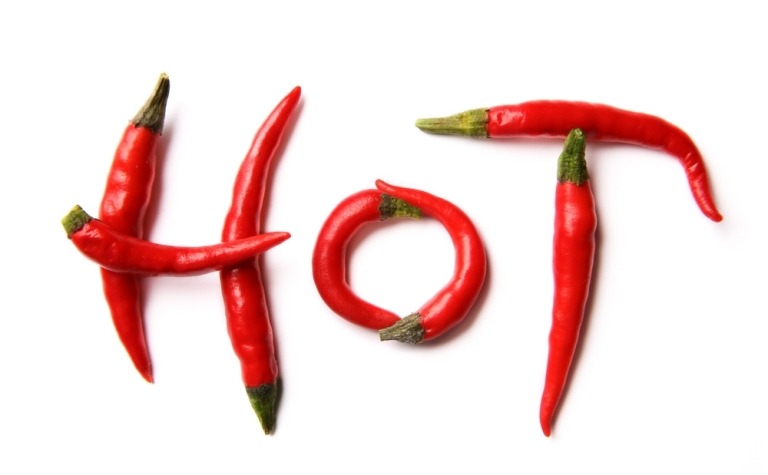Much like invertebrates, plants represent a large source of therapeutic compounds. Plants rely on chemicals for everything, and many of these compounds co-evolved with animals and fungi. Some were meant to attract, while others are meant to deter. Our signals seem to have gotten crossed when it comes to one such plant, who’s defensive mechanism is the very reason it is so popular on our plates— Chili Peppers. Part of the Solanacea family (along with potatoes and nightshade), this genus is known for packing heat, or more specifically a compound called Capsaicin (8-methyl-N-vanillyl-6-nonenamide). And while farmers compete to breed the next nuclear warhead for your taste-buds, researchers are investigating the medicinal uses of Capsaicin.

Chilies have long-been used as a topical pain killer, but only recently was the mode of action understood. Tibor Rhohacs and his team at the Rutgers New Jersey Medical School found that Capsaicin triggers a signalling cascade when it binds to the heat-sensing transient receptor potential vanilloid 1 (TRPV1) ion channels on nerve cells. Prolonged stimulation of these channels eventually result in desensitization (you become “numb” to the burn), but not before depleting the available signalling molecules (specifically phosphoinositides) in the cell membrane. This inhibits the mechanical-sensory ion channels, Piezo 1 and 2, resulting in the numbed sensation and pain relief. According to the authors, this is likely “the first example of ion channel crosstalk mediated by phospholipids”! Ion channel assay screening services have made it more accessible to study the modulation of various ion channels and transporters like the TRPV1.
Chilies are also gaining attention for their ability to combat obesity. According to the WHO, obesity affects one-third of the world’s population. A team from the University of Wyoming found evidence that Capsaicin helps to “burn” fat. They fed mice Capsaicin-laced food, and found that mice with the TRPV1 channel didn’t become obese on the special diet, and that their metabolic activity increased after consuming Capsaicin. (Before you ask– no, the added “kick” to their fodder didn’t affect the mice’s consumption of food and water.) Capsaicin stimulates the conversion of white fat (energy storage) to brown fat (energy burning). The more brown fat you have, the more calories you will burn. Given WHO’s statistics, its no wonder people are getting fired up over the idea of a supplement that will tighten people’s belts without forcing them to change their diets.
With such a hot item, it would be silly not to try it up against the hottest contender of human health– cancer. Hail and Lotan pitted the spice against a platoon of skin cancer cells. Sure enough, they found Capsaicin bound with the membrane proteins of tumour cells, inhibiting oxygen uptake and triggering apoptosis (programmed cell death).
Not all chilies pack Capsaicin, but those who do are taking the world by storm. From burning off your taste-buds (and triggering the release of endorphins) to kicking Cancer in the derrière, these peppers are more than meets the eye. While I am more than keen on effective pain killers and curing cancer, the weight-loss supplement has me pensive; could it lead to further heath issues? Many cases of obesity stem from poor diets; and no amount of burning off those extra pounds will make up for the lack of nutrients that come with most processed foods.
Share your thoughts below!


